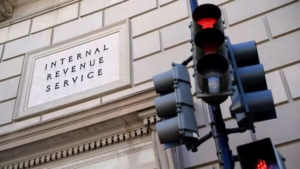The Growing Concern Over Buy Now, Pay Later Services
Buy Now, Pay Later (BNPL) services, such as Klarna, have revolutionized consumer purchasing by offering flexible payment options. However, recent reports indicate a surge in consumer debt and repayment struggles associated with these services. This article delves into the challenges faced by BNPL users, the financial implications, and the regulatory responses aimed at safeguarding consumers.
The Allure and Pitfalls of BNPL Services
BNPL platforms like Klarna have gained popularity by allowing consumers to split payments into manageable installments, often without interest. This model appeals to those seeking immediate gratification without the burden of upfront costs. However, the ease of access can lead to overspending and accumulating multiple loans simultaneously.
A study by the Consumer Financial Protection Bureau (CFPB) revealed that over one-fifth of consumers used BNPL loans in 2022, with many holding multiple simultaneous loans. This stacking of debt increases the risk of financial strain, especially among those with subprime credit scores.
Klarna’s Financial Struggles Reflect Broader Consumer Issues
Klarna, a leading BNPL provider, reported a net loss of $99 million in the first quarter of 2025, more than double the loss from the previous year. This increase is largely attributed to a 17% rise in customer credit losses, highlighting the growing issue of consumers defaulting on payments.
The company’s aggressive expansion in the U.S., including partnerships with DoorDash and Walmart, has exposed it to a broader customer base, some of whom may lack the financial literacy to manage BNPL responsibly. This situation underscores the need for better consumer education and stricter lending criteria. (Financial Times)
Regulatory Responses to Protect Consumers
In response to the growing concerns, the UK government announced plans to regulate BNPL lenders, bringing them under the oversight of the Financial Conduct Authority (FCA). The new regulations will require affordability checks, transparent disclosure of fees, and faster refund processes.
Similarly, the CFPB in the U.S. has issued an interpretive rule stating that BNPL companies are subject to the same regulations as credit card companies. This move aims to provide consumers with protections such as the right to dispute transactions and receive refunds for fraudulent charges. (jacobin.com)
The Psychological Impact and Consumer Behavior
The convenience of BNPL services can lead to impulsive buying behavior, with consumers often underestimating their ability to repay. A Bankrate survey found that 49% of BNPL users experienced issues such as overspending, missed payments, or purchase regret.
Financial counselors have observed an uptick in clients seeking help due to BNPL-related debt. Many users struggle to keep track of multiple payment schedules, leading to missed payments and additional fees. This cycle can quickly escalate, causing significant financial distress.
Conclusion: Navigating BNPL Responsibly
While BNPL services offer a convenient alternative to traditional credit, they come with risks that consumers must carefully consider. It’s essential to understand the terms, keep track of payment schedules, and assess one’s ability to repay before opting for such services.
As regulatory bodies implement measures to protect consumers, individuals must also take proactive steps to manage their finances responsibly. Staying informed and cautious can prevent the pitfalls associated with BNPL services.
Subscribe to trusted news sites like USnewsSphere.com for continuous updates.
[USnewsSphere.com / to.]





